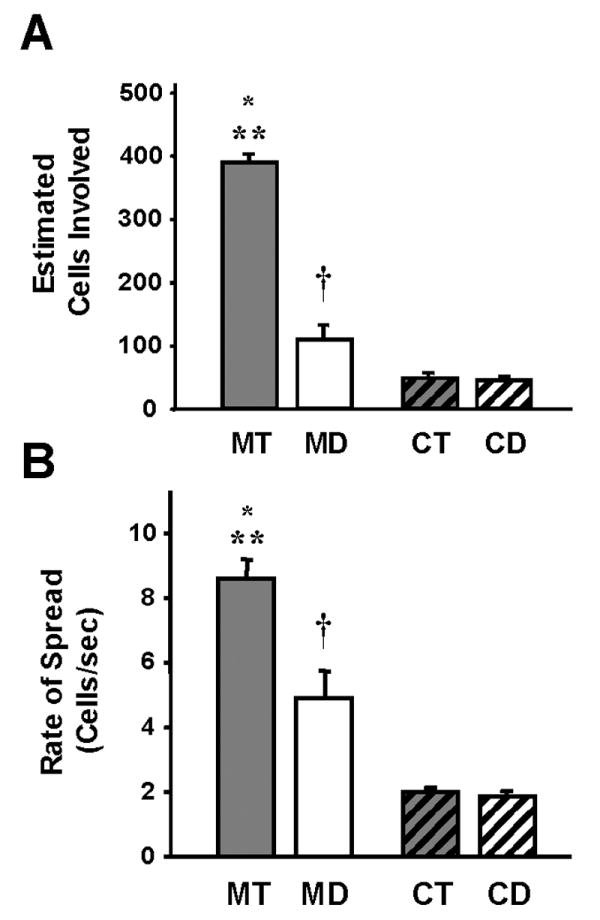Figure 4.

Ca+2 wave propagation differs between mammalian and avian astrocytes. A. The estimated number of cells involved in calcium waves was greater in telencephalic mouse cultures than in the diencephalic mouse cultures (MT vs MD; *, p<0.001, n=10). There were also more cells involved in the mouse telencephalic (MT vs CT and CD; **, p<0.0001, n=10-27) and mouse diencephalic (MD vs CT and CD; †, p<0.003, n=10-27) cultures than in either of the chick astrocyte groups. Chick telencephalic and diencephalic cultures had essentially the same number of cells involved in Ca+2 waves (n=13-27). B. Similar to the number of cells involved in Ca+2 waves, the rate of the spread of the wave was faster in the mouse telencephalic and diencephalic astrocytes than either of the chick astrocyte cultures (MT vs CT and CD; **, p<0.0001, n=10-27; and MD vs CT and CD; †, p<0.01, n=10-27). Mouse telencephalic waves spread faster than mouse diencephalic waves (MT vs MD; *, p<0.003, n=10), whereas the rate of spread was similar between the chick telencephalic and diencephalic waves (n=13-27).
